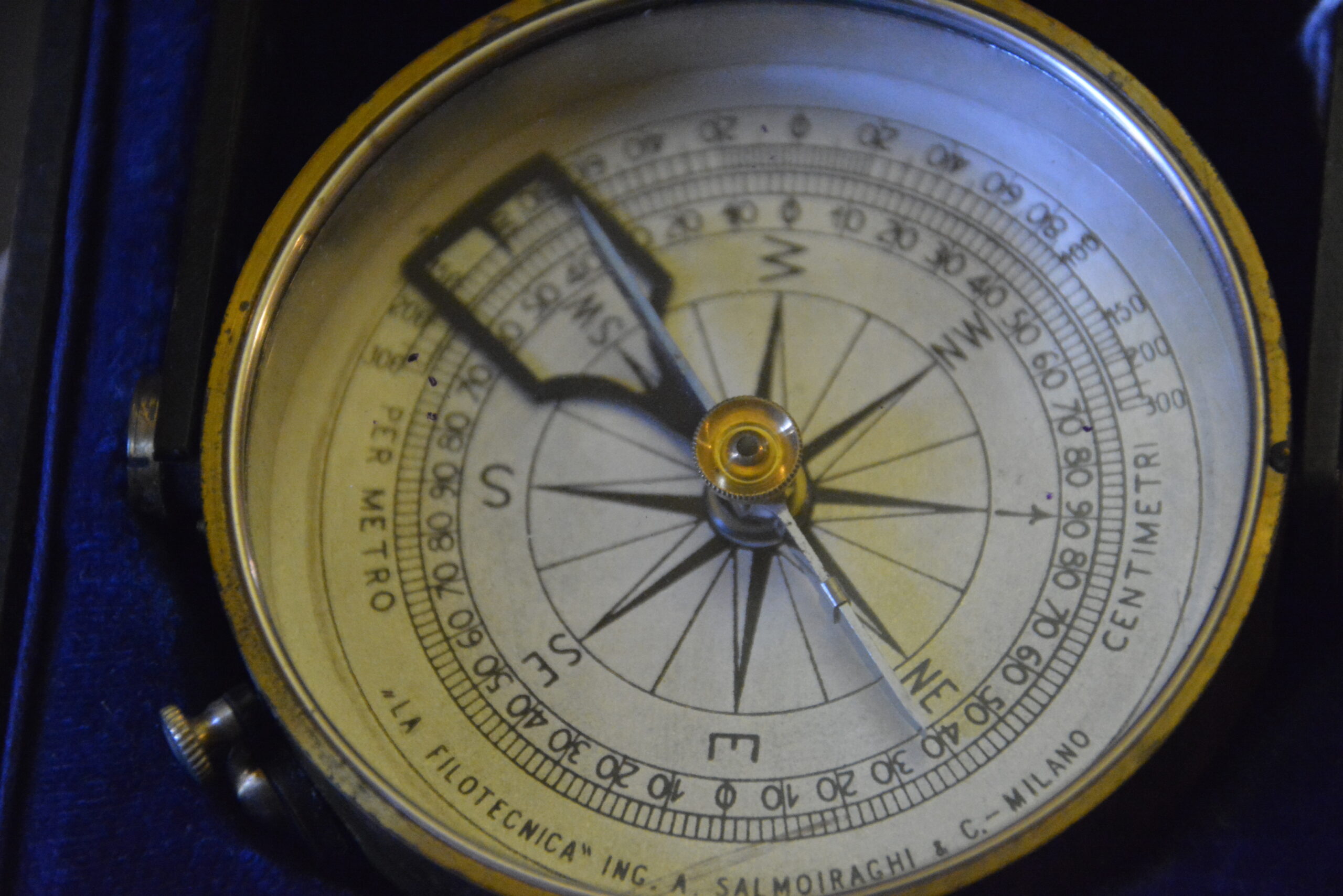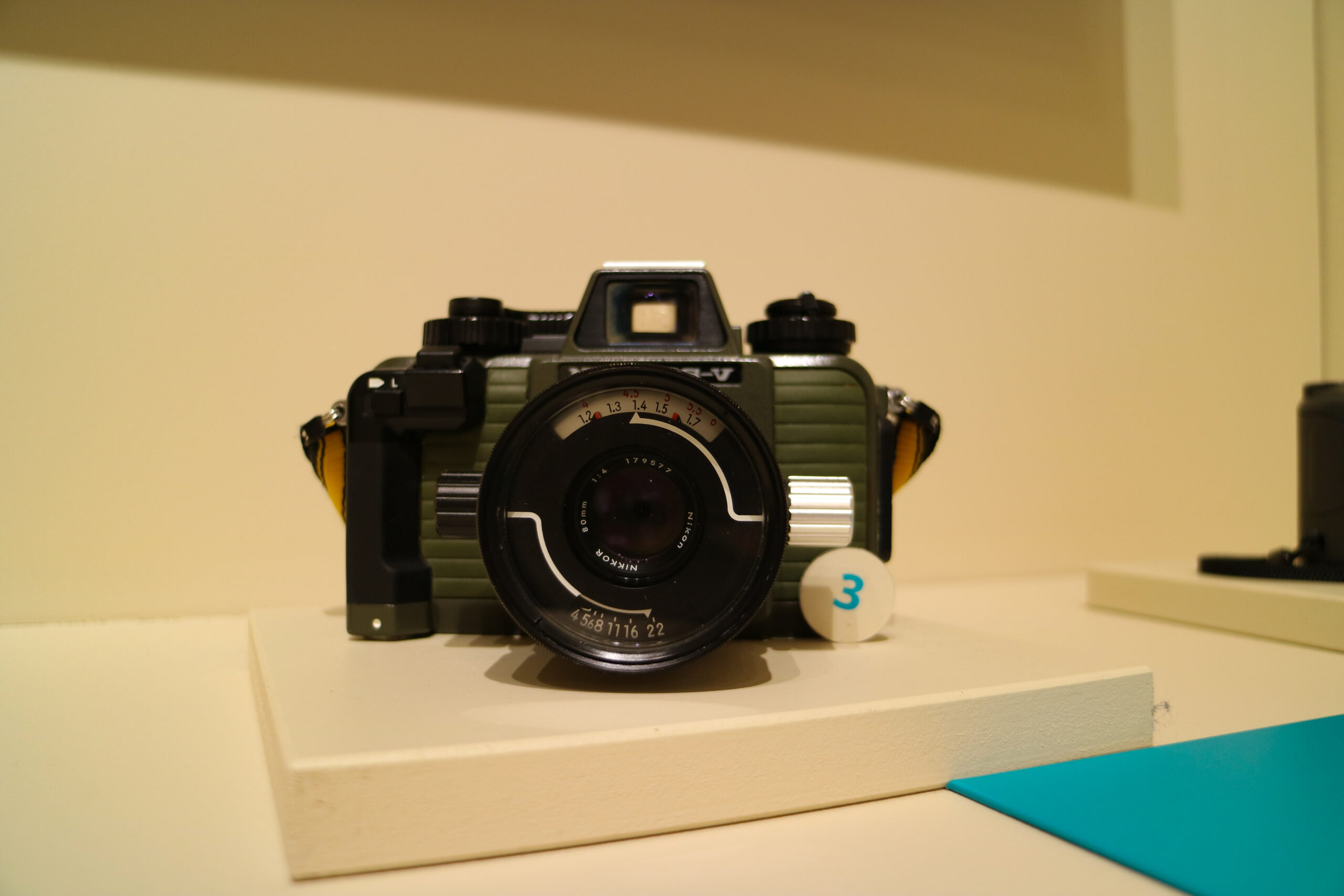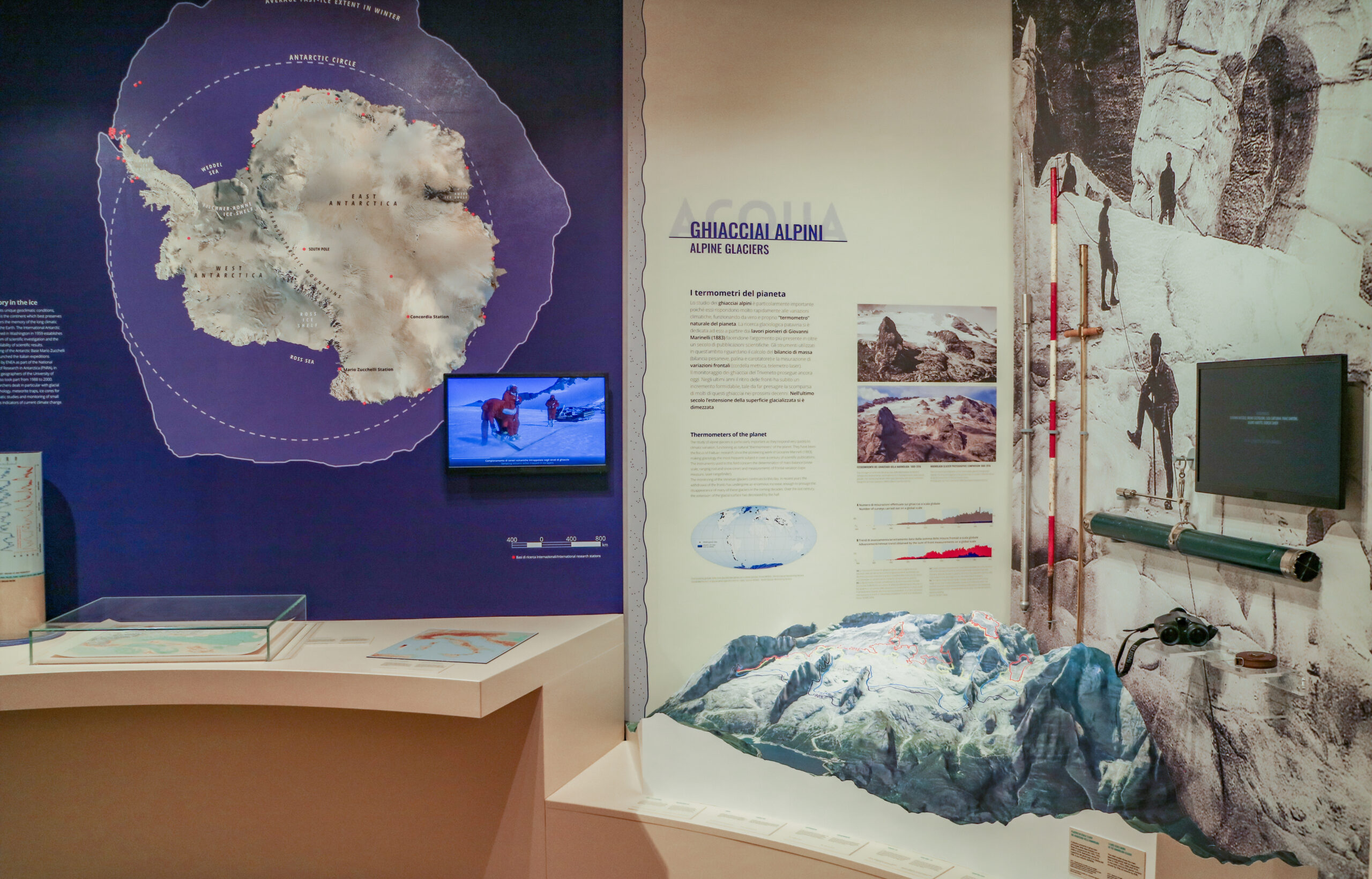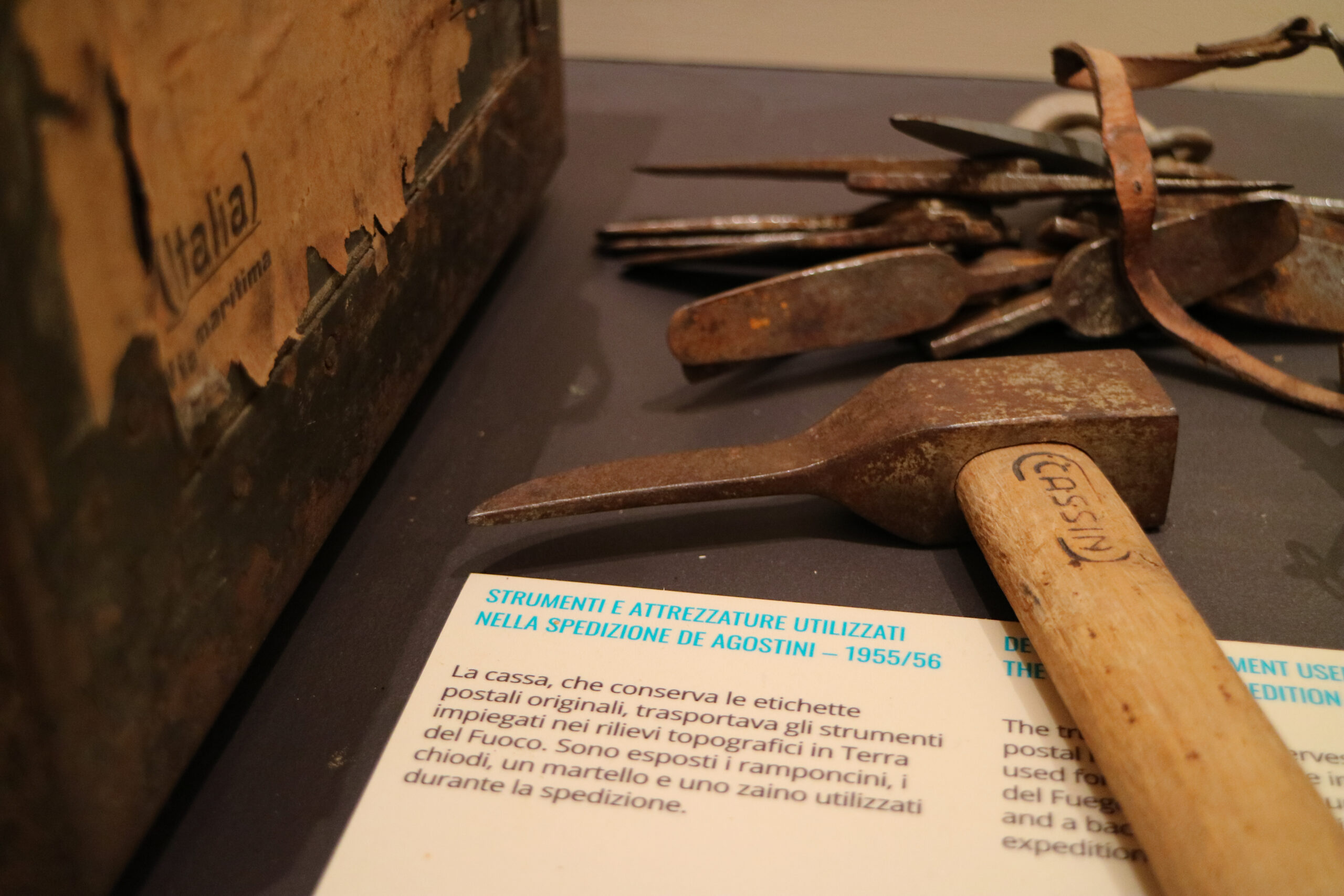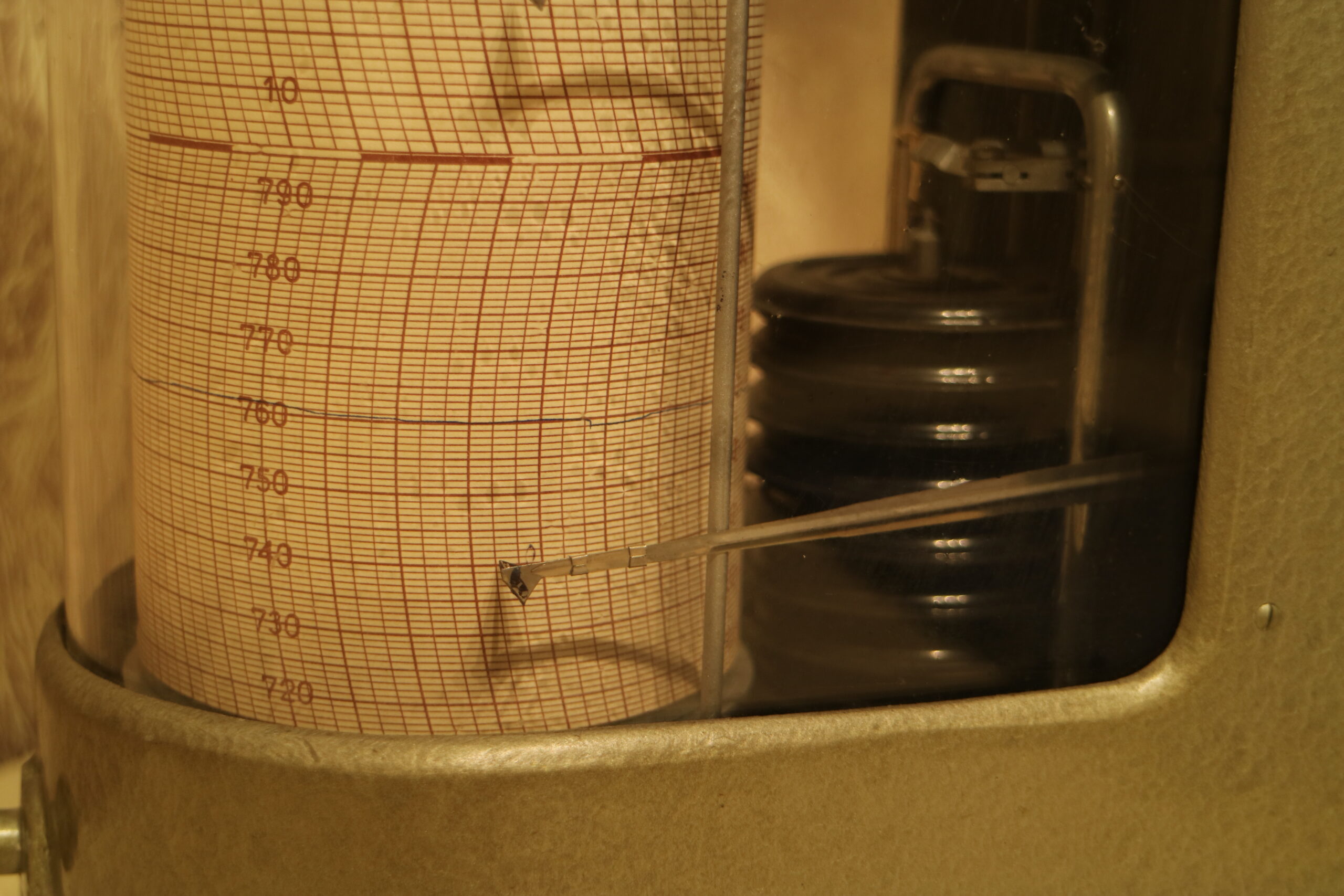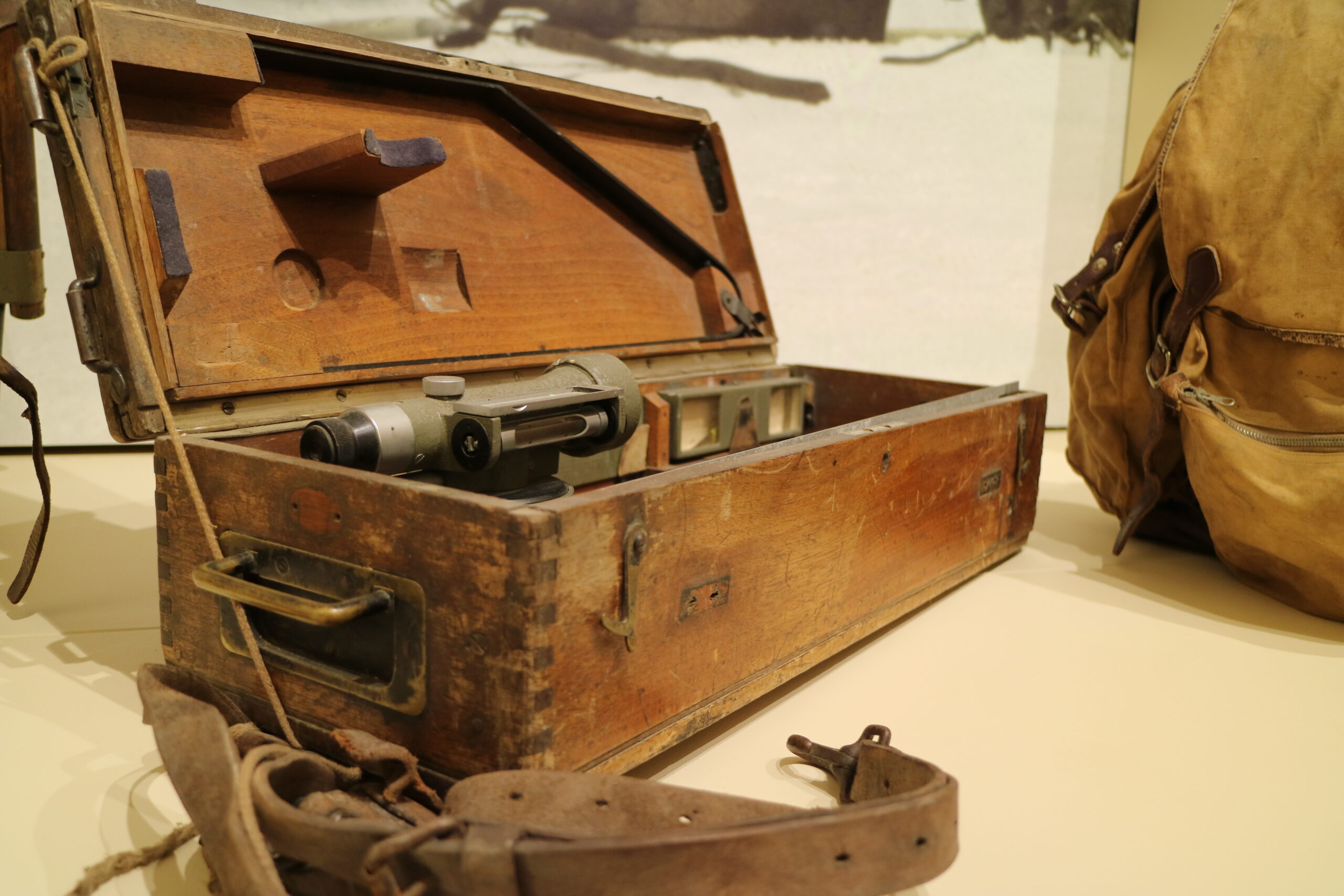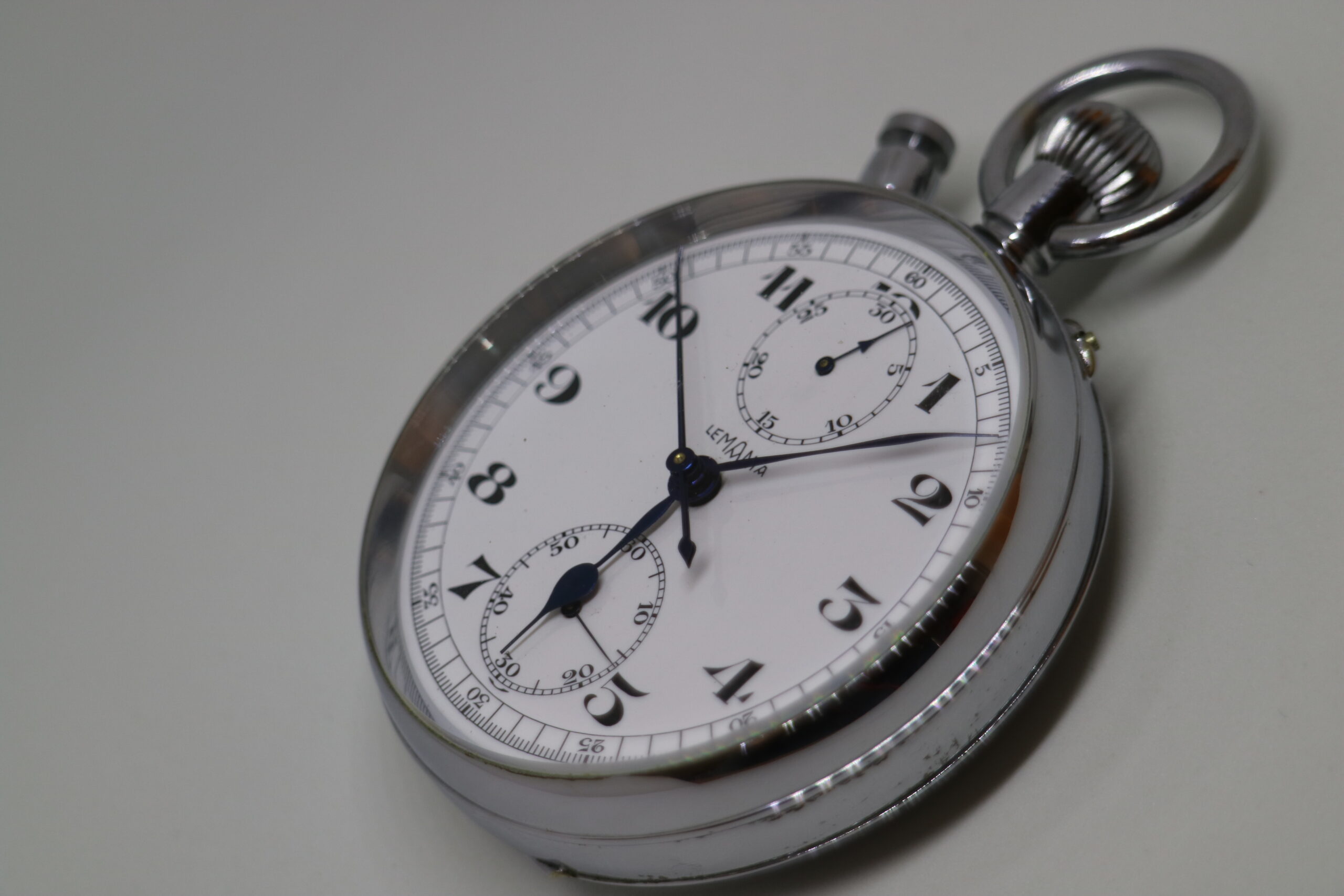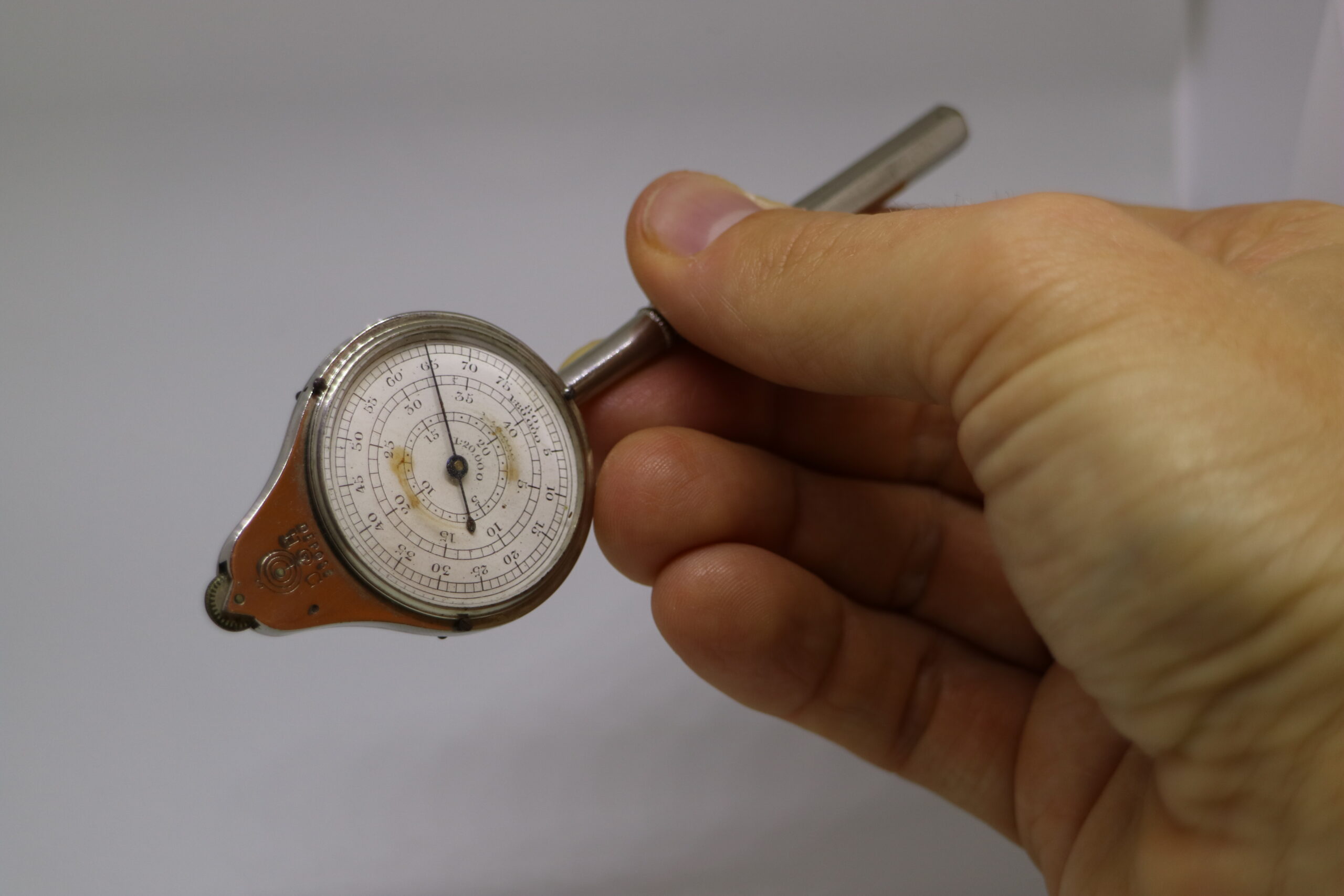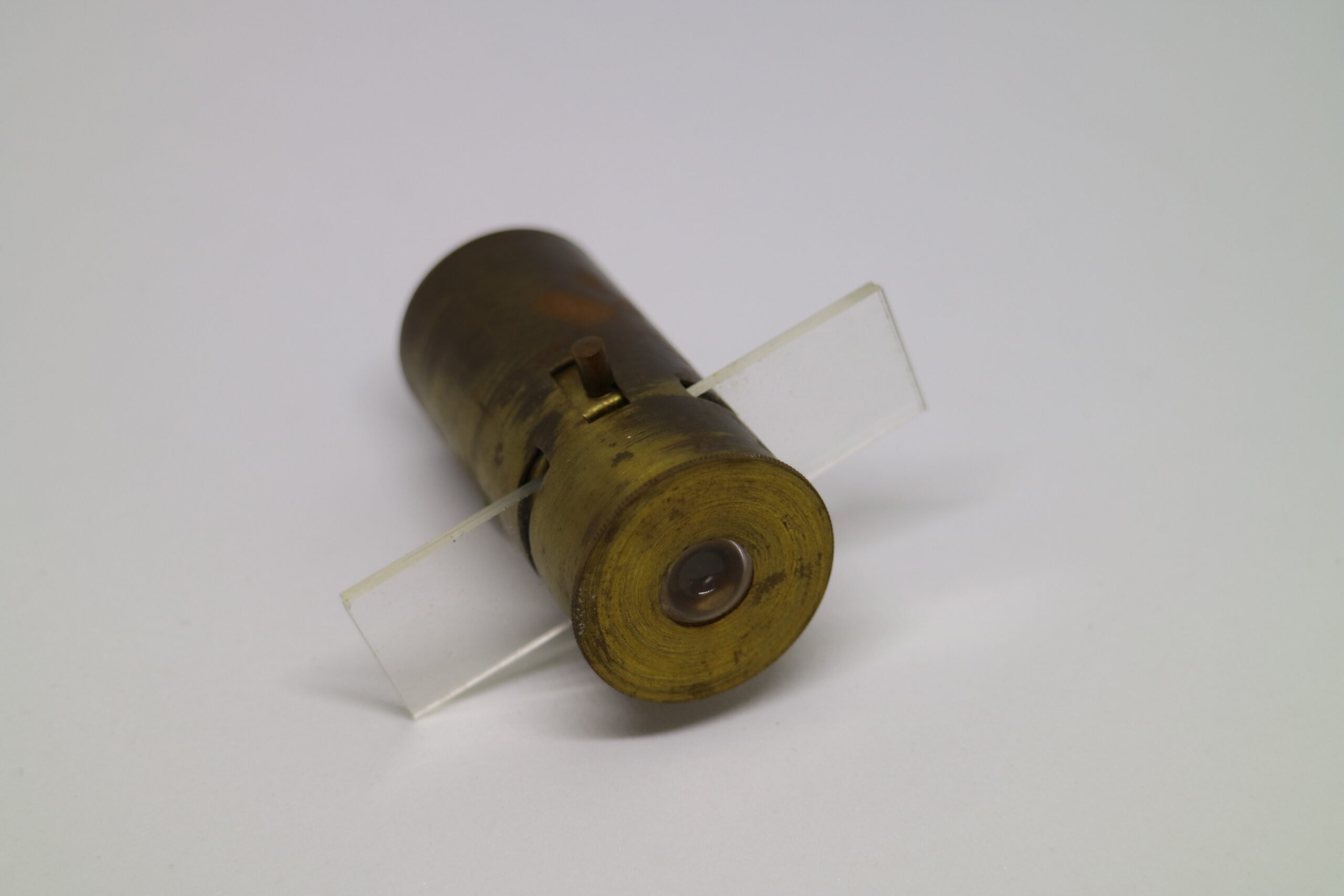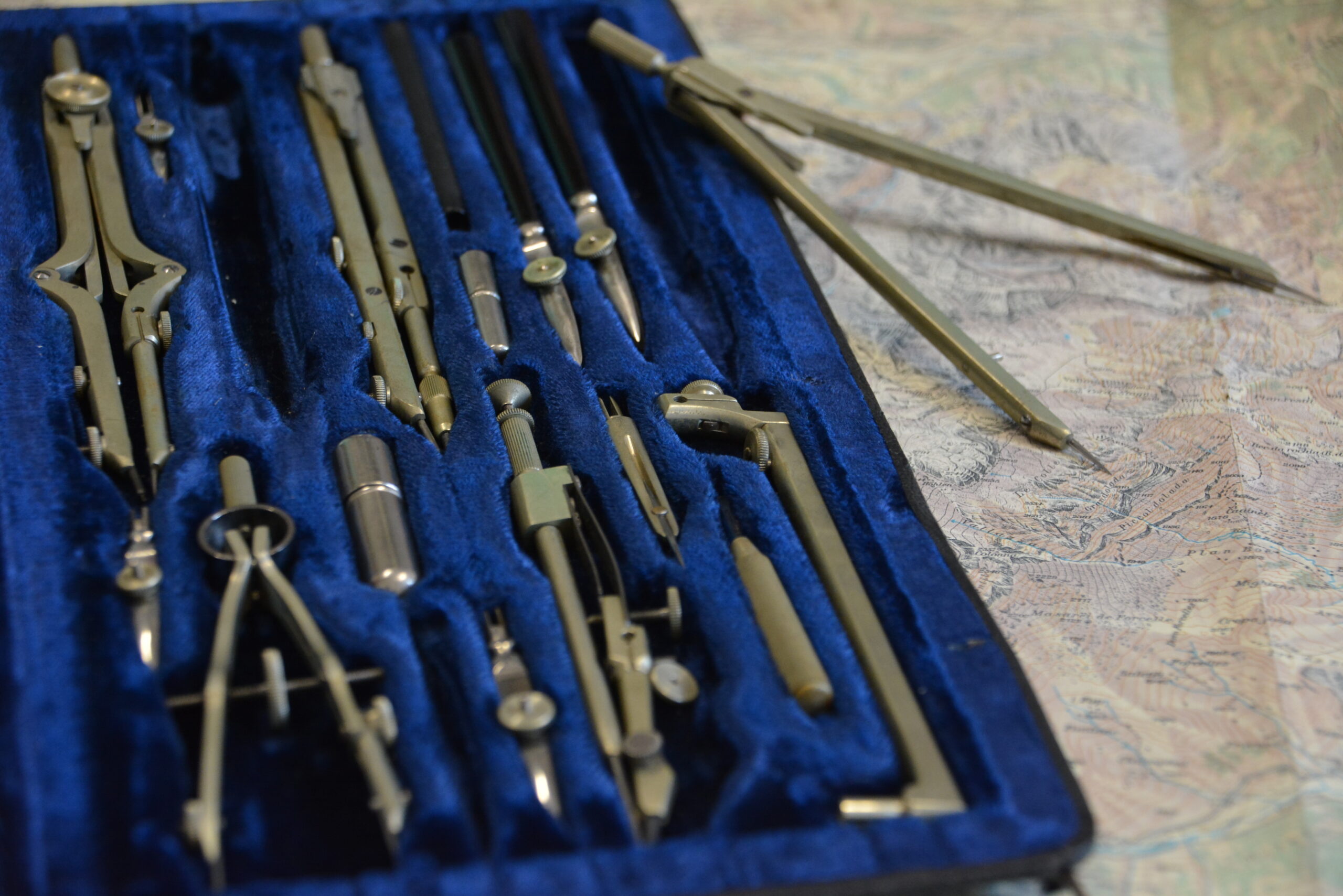Instruments
“With feet in the mud”: the collection of instruments of the Museum of Geography
The museum houses a collection of about 150 instruments used by geographers in their field research, done “with feet in the mud”, to use the famous words of Armand Frémont.
The oldest piece is represented by a compass purchased in 1888 by Prof. Giovanni Marinelli, which with a small nucleus formed by an aneroid barometer, a pocket microscope, an Abney level, a curvimeter, a planimeter, some cameras and two compasses represent the component of the primitive instrumental equipment preserved until today. The main part of the collection dates to the second half of the twentieth century when also thanks to the action of Prof. Giuseppe Morandini, research lines multiplied and, in 1956, the CNR Study Center for Physical Geography was transferred to Padua.
Among the most significant instrumental nuclei are certainly those used during the De Agostini Expedition in Tierra del Fuego in 1955-56 and the meteorological and glaciological ones. Particularly rich, then, is the series of photographic devices, from the bellows camera purchased by Prof. Roberto Almagià in 1914 to the first digital models: it testifies to the essential role of photography in geographical research.
Discover the instruments and their history: visit the Museum of Geography of the University of Padua and explore the means used to study the variety of environments of our planet.

